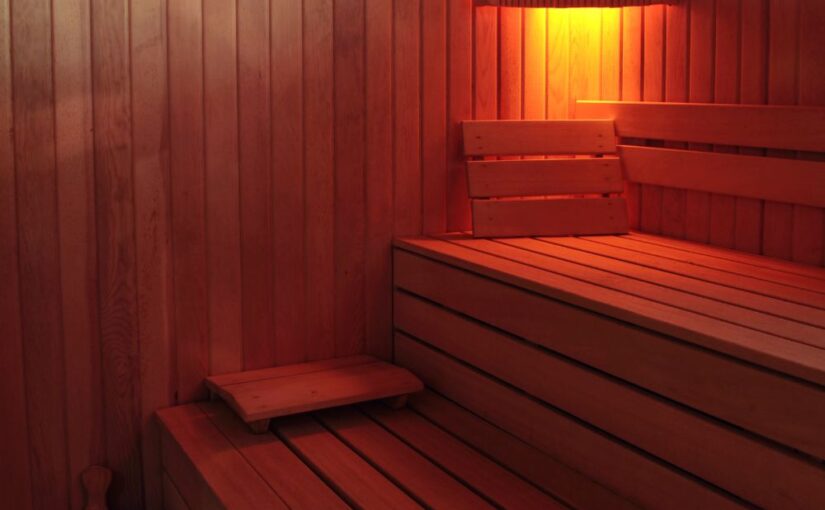When it comes to weight loss, people often search for methods that require less physical effort and promise quicker results. The sauna remains a widely popular wellness trend that frequently piques interest. Many wonder: are saunas good for weight loss, or are their benefits mostly limited to relaxation and muscle recovery? While saunas do offer several health advantages, their direct impact on fat loss and long-term weight management is more nuanced.
In this article, we’ll explore what happens to your body in a sauna, examine the science behind the weight loss claims, and uncover whether sitting in the heat can truly help you shed pounds.
Understanding What a Sauna Does to Your Body
While in a sauna, the body is exposed to high, dry heat. Temperatures typically reach between 150°F and 195°F or 65°C to 90°C, which raises core body temperature. Within minutes, your heart rate increases, blood vessels expand, and you begin sweating heavily. This cardiovascular response can resemble some of the effects of modest physical exertion.
During a sauna session:
- The body works to cool itself through sweating
- Heart rate can rise up to 30% above resting levels
- Core temperature increases, temporarily boosting metabolism
These reactions cause a short-term calorie-burning effect, leading some to believe that saunas directly aid in fat loss. But does sweating really mean you’re burning fat?
Are Saunas Good for Weight Loss or Just Water Loss?
After a sauna session, one of the first effects you may observe is a reduction in water weight. In just 15 to 30 minutes, it’s possible to lose 1 to 3 pounds, but it’s crucial to understand that this weight loss is primarily water, not fat.
Once you rehydrate, most of that weight returns. So, if you’re asking are saunas good for weight loss in terms of sustained fat loss, the answer is more complex.
What the Research Says:
- A study published in the International Journal of Environmental Research and Public Health examined the effects of twelve high-temperature sauna sessions on body composition in healthy young men. The research found that while sauna bathing led to a slight reduction in body fat percentage, the changes were modest and not sufficient to replace the benefits of regular physical exercise. This suggests that while saunas may offer some health benefits, they should not be considered a substitute for traditional exercise.
- Some evidence suggests infrared saunas may penetrate deeper into body tissues, potentially improving circulation and detoxification. However, actual fat loss remains minimal without dietary or activity changes.
In short, while saunas may make you feel temporarily leaner, they don’t result in substantial fat burning. Still, saunas offer indirect benefits that may support long-term weight loss efforts.
Indirect Benefits That Support Weight Loss
Although saunas won’t melt away fat on their own, they can enhance a healthy lifestyle that encourages weight loss. Here’s how:
1. Reduced Stress and Cortisol Levels
Chronic stress increases cortisol, a hormone associated with belly fat storage. Sauna sessions promote relaxation, helping reduce stress and potentially regulating cortisol—supporting weight control over time.
2. Improved Recovery and Muscle Function
Post-exercise muscle soreness can hinder your routine. Sauna heat helps relax muscles and improve circulation, speeding up recovery. This helps maintain regular physical activity, which is essential for sustained weight loss.
3. Better Sleep Quality
Regular sauna sessions can improve sleep by boosting the body’s natural melatonin levels. Poor sleep is a major factor in weight gain, as it disrupts hunger-regulating hormones like ghrelin and leptin.
4. Mild Detoxification Through Sweating
While your liver and kidneys do most of the detox work, sweating can help remove small amounts of toxins. This may boost overall energy and well-being, making healthy choices easier to maintain.
Comparing Saunas to Other Weight Loss Methods
It’s essential to understand that saunas can’t replace regular exercise or balanced nutrition. For example, a 30-minute fast-paced walk can burn 150-200 calories, whereas an equal-length sauna session often burns only 30-60.
Quick Comparison:
| Method | Estimated Calories Burned (30 min) | Primary Effect |
|---|---|---|
| Brisk Walking | 150–200 | Cardiovascular fitness, fat loss |
| Cycling | 200–400 | Muscle toning, fat loss |
| Sauna Session | 30–60 | Water loss, relaxation |
So, are saunas good for weight loss? Not on their own—but they can enhance your efforts when used alongside other healthy practices.
Types of Saunas and Their Effects
Different sauna types may offer slightly varied experiences and benefits:
Traditional (Dry) Sauna
- Heats air using rocks or electric heaters
- Encourages intense sweating
- Good for cardiovascular stimulation
Infrared Sauna
- Uses infrared light to warm the body directly
- Operates at lower temperatures
- May penetrate deeper for enhanced detox effects
Steam Room
- High humidity and moist heat
- Opens pores and hydrates skin
- Less intense heat than dry saunas
All sauna types promote sweating and relaxation, but none should be viewed as standalone tools for weight loss.
Precautions and Considerations
Before incorporating sauna sessions into your routine, consider the following safety tips:
- Keep Hydrated: Consume water before and after a session to prevent dehydration
- Limit Time: Keep sessions to 20–30 minutes max
- Consult Your Doctor: Especially if you have heart conditions, low blood pressure, or are pregnant
- Use as a Supplement: Saunas should complement, not replace, other weight loss efforts
Conclusion: Are Saunas Good for Weight Loss?
So, are saunas good for weight loss? The answer depends on your expectations. Saunas don’t cause significant calorie burn or immediate fat reduction. However, they do offer valuable indirect benefits—from improved sleep and recovery to reduced stress—that can support a healthy weight-loss journey when combined with proper diet and exercise.
Used safely and consistently, saunas can be a powerful complement to your wellness routine—but not a replacement. As with any sustainable weight loss approach, the best results come from combining multiple healthy habits, not relying on any single method alone.
Frequently Asked Questions (FAQ)
Saunas can lead to temporary weight loss through water loss, but they do not significantly burn fat. Any fat-burning effects are minimal without exercise and a healthy diet.
A typical 30-minute sauna session burns between 30 and 60 calories, depending on body size and heat intensity. This is far less than the calories burned during physical exercise.
Yes, when used alongside proper diet and exercise, saunas can support weight loss indirectly by reducing stress, improving sleep, and aiding muscle recovery.
Most experts recommend two to four sessions each week, with each lasting 15 to 30 minutes. Stay hydrated and listen to your body.
Sauna-induced sweating may help eliminate small amounts of toxins, but your liver and kidneys are primarily responsible for detoxification.

